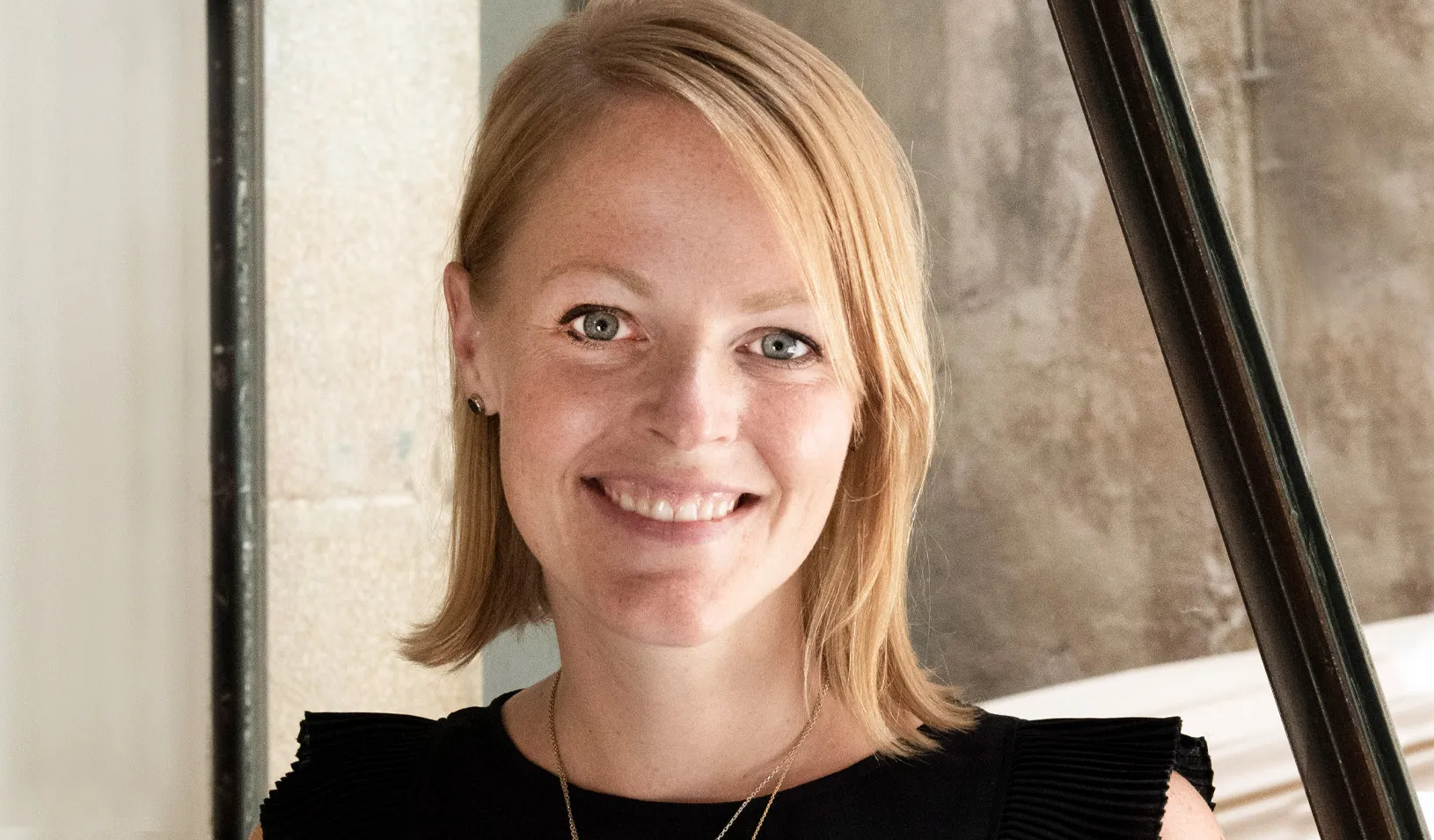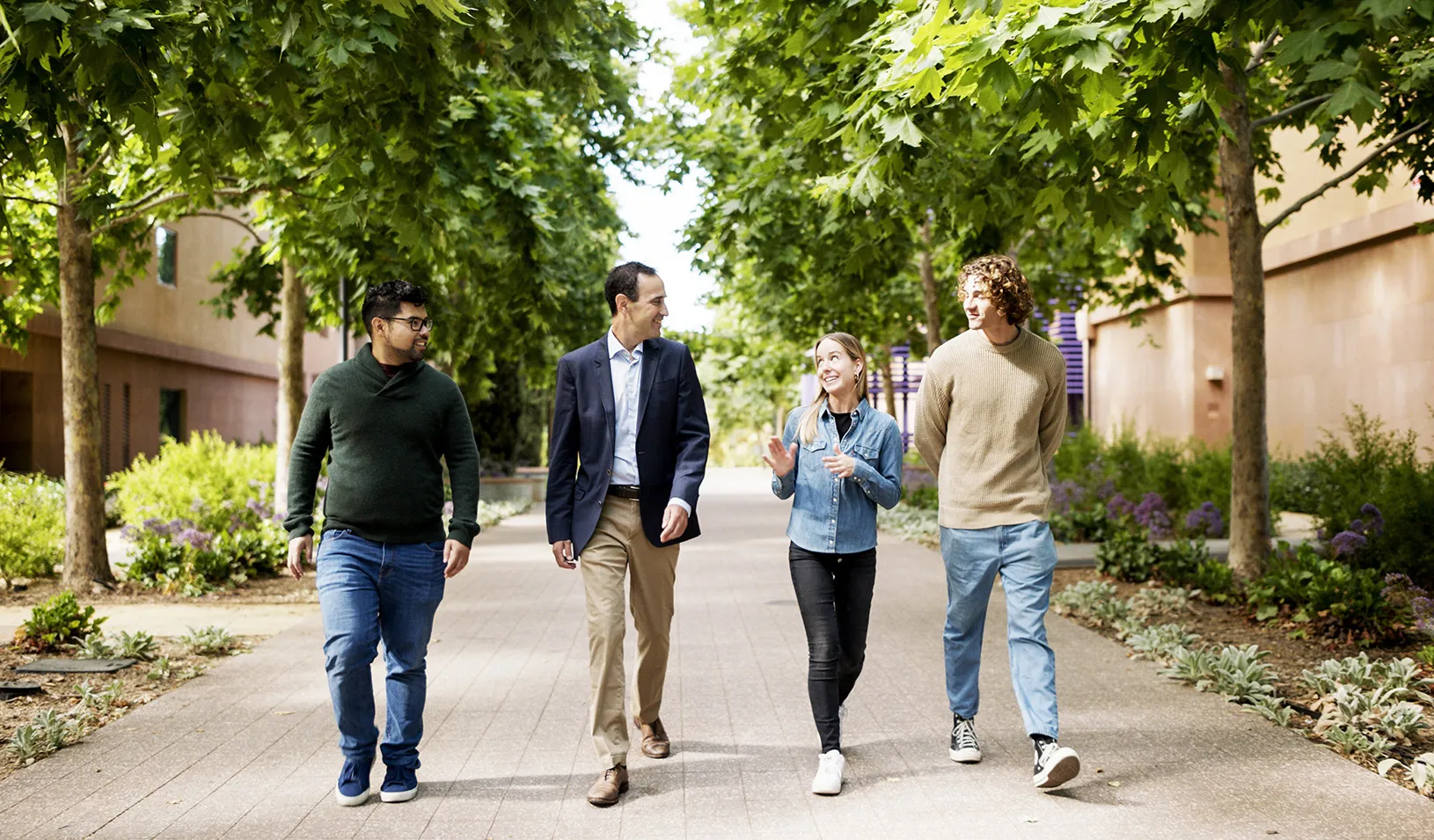Third Consecutive Year of Record Salaries for Stanford MBA Class of 2017
The 2017 Employment Report reflects a strong market for Stanford MBA graduates and reveals their broad range of career interests and choices.
December 13, 2017

The Stanford MBA Class of 2017 gathers in CEMEX Auditorium before the commencement processional. | Saul Bromberger
“By all major metrics, this is the third consecutive year of a strong employment market, and demand for hiring our students remains strong,” said Yossi Feinberg, senior associate dean for Academic Affairs, who oversees the MBA program. “Behind the data points in this year’s report are 392 individuals who pursued their passions through career choices in widely varying industries, locations, and functions.”
In aggregate, some highlights emerged: interest in finance and consulting industries gained ground while technology fell, more graduates went to careers in socially responsible roles or organizations, the entrepreneurship rate edged a little higher than last year, and the number of organizations that recruited summer and full-time positions continued its year-over-year rise.
“In addition, we observed that the number of women going to private equity and venture capital has nearly doubled since 2014,” said Maeve Richard, assistant dean and director of the Career Management Center. “While we do not disclose fine-grain gender detail and the numbers are still small, we see a definite widening of the cracks in the glass ceiling.”
Stanford GSB: A Transformational Experience
“Regardless whether they have pivoted from their pre-MBA careers, graduates tell us about the transformation they experienced when they were here,” said Feinberg. “Even if they return to their previous industry, their perspectives have changed dramatically in terms of their own personal development.”
This is what happened to Angel Pu who landed a position as vice president at the New York private equity firm Warburg Pincus where she had worked prior to business school. She identified at least three seminal influences at Stanford GSB. Topping the list, the investment course taught by legendary finance professor, Jack McDonald, was an eye-opener. “I’m really grateful to have taken that class, to meet and learn from some of the best investors in the world,” she said. “It inspired my love of investing, and taught me to always keep learning and developing my own investment style. I hope to follow in the footsteps of the many great investors we met through the class to one day start my own fund.”
She credits her summer internship at investment management firm Capital Group for raising awareness of her own blind spots, mostly around biases and how initial impressions may cloud one’s thinking of a business — topics covered in Stanford GSB organizational behavior classes. There she also became more attuned to thinking through the potential range of outcomes, particularly the downsides.
Lastly, she cited an informal investing group of classmates as one of the three influences in changing her perspective. “We would pitch investment ideas and teach each other based on our past experiences, and help each other get better,” she said. “It was a group of very impressive and awesome people who I’m sure will accomplish amazing things. And of course we all became really good friends.”
As one of a growing cadre of females in a male-dominated industry, Pu advises women coming up behind her not to be intimidated by the perceived high bar to entry, and the industry’s reputation for tough hours. There are many ways to gain experience, and work-life balance is better than one might think, particularly at the senior levels. In fact, she said, now is an excellent time for women to enter PE/VC as firms have stepped up hiring efforts in the past few years. “Personally, I think this is one of the most interesting, intellectually challenging and rewarding jobs out there,” she said.
While Stanford MBA graduates have long sought to make a difference in the world, they are increasingly choosing mission-driven work directly after business school rather than waiting or serving on a volunteer basis. Among this year’s graduates — including entrepreneurs and sponsored students — 13% answered yes to the question: Have you chosen a socially responsible role in a private business? Last year when the question was introduced, 8% answered yes.
Sioux Falls, South Dakota, native Zachary Crago decided in his sophomore year in college to commit his career to social impact. Now a consultant at The Bridgespan Group, based in San Francisco, his transformational experience at Stanford GSB led him to pivot on all four dimensions from his pre-MBA career: industry, function, level of responsibility, and location. From a role as an executive director of the South Dakota Democratic Party, he landed in a client services position at a global consulting firm serving the world’s largest foundations, nonprofits, and philanthropists.
“I wanted a career that allowed me to make a meaningful difference in the lives of everyday people, continue the professional development I got at Stanford, and earn enough to lead a fulfilling life,” said Crago. “Over the course of business school, I tried to do work — for example, two internships, extracurriculars in fields of interest — that fulfilled my objectives in different ways. Then, I just tried to reflect about what work motivated me the most.”
He cites the Design for Extreme Affordability course for opening his eyes to design thinking, the methodology used by designers to solve complex problems and find solutions. “It reinforced my desire to use my business school experiences for social impact, and illuminated my love for building things,” he said. “Whether for work or for fun, I try to incorporate human-centered design in everything I do.”
Record High Salaries
The median and average annual base compensation of $140,000 and $144,455, respectively, surpassed last year’s all-time highs by about $4,000. Average annual signing bonus rose by nearly $3,000 to a record $29,534; the median remained unchanged at $25,000. And other guaranteed compensation (OGC) passed last year’s all-time highs by about $10,000 in both the average at $83,065, and the median at $50,000.
In lieu of OGC, which will no longer be tracked by the MBA Career Services and Employer Alliance (CSEA) after this year, Stanford GSB has begun capturing an “Expected Performance Bonus” metric that includes guaranteed as well as non-guaranteed cash compensation based on performance. Of the Class of 2017, 65% expected to receive a cash performance bonus, an increase over last year’s 61% (in contrast, 25% reported OGC). These graduates expected an average bonus of $71,946 more than $5,000 over last year; with a $35,000 median, about $3,700 less than last year; and a range of $5,000–$450,000.
Timing of Job Offers
In adherence to CSEA standards, Stanford Graduate School of Business reports full-time job offer and acceptance rates at graduation, and at 90 days after. However, Stanford MBA graduates remain confident in the strength of the market and their ability to find the perfect opportunity and fit, regardless of CSEA deadlines.
At 90 days after Stanford GSB’s June 17, 2017 graduation, 88% of the class accepted offers, a 5-point increase over last year; and 92% had offers, a 2-point rise.
Industries
In a rebalancing of the scales among the 3 top industries, interest in technology dropped 8 points to 25% compared to last year, as finance inched up a point to 32%. Meanwhile, consulting gained 4 points to 20%.
Stanford MBA students and graduates were hired by a record 411 organizations, a 7% rise over last year and a 34% jump from 6 years ago. A signal of the sheer breadth of Stanford GSB employers, 95% hired just 1 or 2 students.
“Our leading employers span a wide variety of industries,” said Richard. “They represent organizations in such areas as consulting, finance, technology, consumer products, healthcare, and nonprofits. What they do have in common is work environments that offer the ability to make an impact with a focus on agency, career development, diverse challenges, and responsibilities.”
Entrepreneurship
Not included in the CSEA-defined job-seeking pool, 16% of the class launched startups in a broad variety of industries. The top 5 for these entrepreneurial graduates are: software (15%), finance (11%), healthcare (9%), real estate (9%), and internet services (9%). This year’s entrepreneurs represent a 1-point rise over last year.
Location
In 2017, 62% of Stanford GSB graduates selected careers in the West region, representing a slight 3% decline compared to last year.
Counter to assumptions, only 35% of these West region jobs relate to technology. Finance represented 26%, and consulting represented 15%.
Outside of the West region, the Northeast was the next most popular location drawing 16% of the class, while international jobs attracted 11%.
For media inquiries, visit the Newsroom.
Explore More
Erin Nixon Joins Stanford GSB as Assistant Dean of Admissions

Nia Rose Froome, MBA ’23: Making Local, Fresh Food Available for All

New Research Fund Promotes Responsible Leadership for the Next Century
